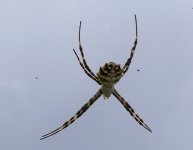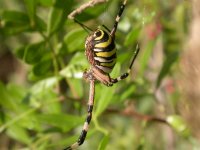Hello Mike
Just returned from Dragonera; two great days and my first Balearic Shearwater call (2013-2014) for Dragonera- a lonely female.
There’s a lot information but very dispersed.
I must find time to get all this on a Balearic Islands Shearwater web. And this year we’ve finally started to prepare the material
Seabirds breed on predator free islands, and this is also true for both of our Shearwaters. Most of the colonies are found on small coastal island that are predator free. Some colonies can be found on the large islands, but they are very inaccessible (high cliffs of the island of Formentera. A shearwater predator refugee on large island.
Near Mallorca we have three well known and studied colonies: the National Park of Cabrera, the Natual Park of Dragonera and the Malgrats. These areas are also important breeding areas for Scopoli’s and other seabirds. There are also some breeding sites along the north Sierra de Tramuntana, this area needs is still been explored for unknown colonies.
Shearwaters (Balearic and Scopoli’s) breed on the high cliffs of Formentera, and several of the small coastal islands and islets surrounding Ibiza.
Menorca is a bit different. We have an important colony of Scopoli’s along the NW and NE coast of Menorca. Breeding in high cliff areas on the main island. Predation in these areas is a serious problem. Yelkouan type shearwaters breed on the NE coast of Menorca. The taxonomy of “Puffinus” shearwaters of Menorca is a bit confusing. All birds breeding on Menorca are of the Yelkouan type (size and plumage), but there is hybridization with Balearic DNA. The hybridized birds look like a Yelkouan. Any Yelkouan observed near Mallorca or Menorca, could be a Menorcan-Balearic-Yelkouan type Shearwater.
Shearwater Phenology - Balearic - Yelkouan birds of Menorca add 1-2 weeks.
Presence in the colony: September ---July
Laying: last week February - first week March
Hatching: Last week April
Fledging: First week July
NE-Atlantic - Portugal, France and UK: June-September. Non breeding birds start to move to the Atlantic in May. First year birds? We’re working on that mystery. We think that the birds of Menorca probably stay in the Mediterranean.
Feeding areas are seasonal, but they are always very coastal. Near the Balearic Islands they normally don’t follow the trawlers (they do follow trawlers off the coast of Catalunya). Birds can be observed feeding along th ecoat of Mallorca: Sóller, SW coast of Mallorca, Bay of Palma, Bay of Alcudia and Pollensa). They can feed in shallow waters, very near the coast. The birds are were the food is. With experience you can start to predict the best places and months.
Scopoli’s (I like to split them - they are easy to separate in the field and vocalizations are distinct).
Presence in the colonies: February--October
Laying: last weeks of May
Hatching: First week August
Fledgling: Last week October
South Atlantic - Namibia, etc...: October-February. Non breeding birds move to the Atlantic earlier.
Coastal and offshore feeding, a lot of feeding depends on the trawler fleet.
To fund our island restoration projects we’ve started to run boat tours to observe shearwaters in the area of Cabrera. We’ve started with Scopoli’s - our non critically endangered test shearwater, and the experience has been very good. This winter we’ll be starting with our critcally endangered Balearic.
I can get very exited with shearwaters. We could meet and have a coffee and a long talk about shearwaters; and observing shearwaters.
Regards
Miguel
Some links about Balearic:
A paper we published with some interesting information about movements and phenology:
http://www.plosone.org/article/info%3Adoi%2F10.1371%2Fjournal.pone.0033753
Some recent notes about our work on Dragonera:
http://www.birdguides.com/webzine/article.asp?a=3925&utm_source=twitterfeed&utm_medium=twitter
The Balearic Shearwater is ACAP listed. I'm helping John Cooper with the ACAP nesting site series (very soon information about Ibiza and Formentera):
http://www.acap.aq/index.php/es/novedades/ultimas-noticias/1300-acap-breeding-sites-no-3-sa-cella-sa-dragonera-mallorca-balearic-islands-home-of-the-balearic-shearwater
http://www.acap.aq/index.php/es/novedades/ultimas-noticias/1302-the-enigmatic-shearwaters-of-menorca-balearic-or-yelkouan
http://www.acap.aq/index.php/es/novedades/ultimas-noticias/1492-acap-breeding-sites-no-46-the-cabrera-archipelago-maritime-terrestrial-national-park-supports-balearic-shearwaters-in-the-absence-of-introduced-predators




